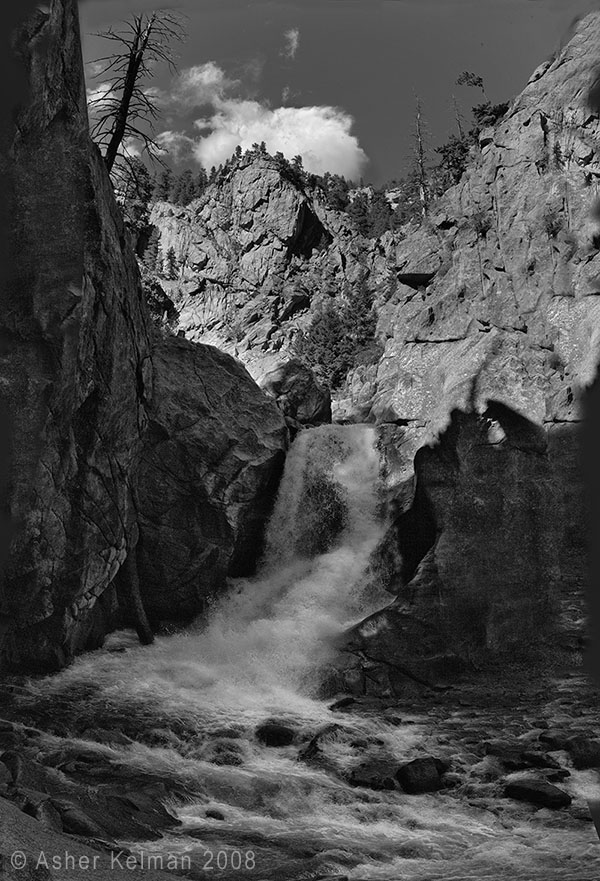David A. Goldfarb
New member
Just realized that I'd forgotten the location along with my post. That's Puahokumoa Falls on Maui.

Linhof 4x5 Tech V, 360/5.5 Tele-Xenar, medium yellow filter, f:32, 1/2 sec.
Efke PL100, ABC pyro
Albumen print, Strathmore 500 2-ply, gold toned
The brightness range between the near tree trunks and the falls was huge--like an indoor/outdoor shot. The self-masking property of albumen printing, common to all printing out processes like Ziatype and Centennial POP, makes it possible to get detail in the highlights without the shadows completely blocking up. The texture of the paper muddles the scan somewhat.
Now he actually coats paper with egg white and then before use add the silver sensitizing solution. Pretty clever.
Asher
Hi Serge,Here are 2 waterfalls in Valais.
Tachihara 45, with Nikon 90, FP4
http://photo.net/photodb/photo?photo_id=6891687
http://photo.net/photodb/photo?photo_id=6687302
[IMG]http://gallery.photo.net/photo/6891687-md.jpg[/IMG]


Hi Christina,My first post and I thought I'd start in here
This is a picture I took for arts sake, for my own pleasure. I was trying to capture the power of the falling water and ended up with something that actually looked quite delicate and strokeable.
The brown colour is natural to the water and I've tried this image as a duotone but the browness reminds me of a creatures hair so I have reverted back to this one.
Practicalities - Aysgarth Falls, Yorkshire Dales, UK
Canon EOS5D, EF 85mm f/1.2 II
F16, iso 50 chosen to slow things down a bit, giving a shutter speed of 0.5 secs.
I normally edit out the image to cut down loading time, but this waterfall I want to see twice. Waterfalls and moving water are very impressive. They drown out everything else with a roar or else the water gently bubbles over the edge and one can still hear the birds singing.My first post and I thought I'd start in here
This is a picture I took for arts sake, for my own pleasure. I was trying to capture the power of the falling water and ended up with something that actually looked quite delicate and strokeable.
The brown colour is natural to the water and I've tried this image as a duotone but the browness reminds me of a creatures hair so I have reverted back to this one.
Practicalities - Aysgarth Falls, Yorkshire Dales, UK
Canon EOS5D, EF 85mm f/1.2 II
F16, iso 50 chosen to slow things down a bit, giving a shutter speed of 0.5 secs.







